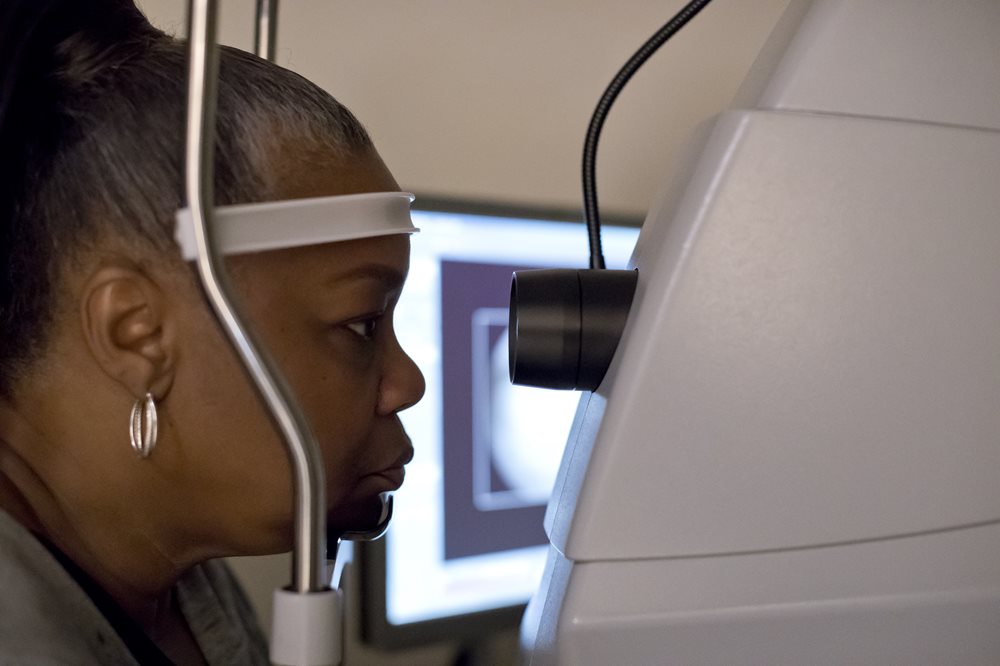Cataracts: Types, Causes and Risk Factors
 The National Eye Institute reports that by 2050, the number of people in the U.S. with cataracts is expected to double from 24.4 million to about 50 million. By age 80, most people either have cataracts or have had cataract surgery.
The National Eye Institute reports that by 2050, the number of people in the U.S. with cataracts is expected to double from 24.4 million to about 50 million. By age 80, most people either have cataracts or have had cataract surgery.
There are different types of cataracts:
- Age-related cataracts. The majority of cataracts are related to aging.
- Congenital cataracts. Some babies are born with cataracts. Some children develop them in childhood, often in both eyes. Some congenital cataracts do not affect eyesight, but others do and need to be removed.
- Secondary cataracts. Secondary cataracts usually happen because of another disease in the body (such as diabetes). Secondary cataracts have also been linked to steroid use.
- Traumatic cataracts. An injury to one or both eyes may cause you to develop a traumatic cataract. This can happen either right after the accident or several years later.
Doctors and researchers don’t know exactly what causes some people to get cataracts, but there are risk factors that can make cataracts form faster, including:
- Smoking
- Drinking too much alcohol
- Spending too much time in the sun without sunglasses
- Diabetes
- A serious eye injury
- Eye surgery to treat glaucoma or another eye condition
- Taking steroids for an extended time
- Radiation treatment for cancer or other diseases
 You might not have any symptoms at first, when cataracts are mild. But as cataracts grow, they can cause changes in your vision. Symptoms include:
You might not have any symptoms at first, when cataracts are mild. But as cataracts grow, they can cause changes in your vision. Symptoms include:
- Cloudy or blurry vision
- Colors look faded
- You can’t see well at night
- Lamps, sunlight, or headlights seem too bright
- You see a halo around lights
- You see double (this sometimes goes away as the cataract gets bigger)
- You have to change the prescription of your glasses often
The symptoms of early cataracts may be improved with new eyeglasses, brighter lighting, anti-glare sunglasses, or magnifying lenses. A cataract needs to be removed only when vision loss interferes with your everyday activities, such as driving, reading, or watching TV.
You and your eye care professional can make this decision together. Once you understand the benefits and risks of surgery, you can make an informed decision about whether cataract surgery is right for you.
During cataract surgery, the doctor removes the clouded lens and replaces it with a new, artificial lens. According to the American Optometric Association, cataract surgery is one of the safest and most effective types of surgeries in the U.S. and approximately 90 percent of patients report better vision following the surgery. Cataract surgery is one of the most common operations across the country.
 Talk about your options with your optometrist at The Eye Institute. Remember these tips:
Talk about your options with your optometrist at The Eye Institute. Remember these tips:
- Tell your optometrist if cataracts are getting in the way of your everyday activities
- See your optometrist for annual eye exams
- Ask your doctor about the benefits and risks of cataract surgery
- Encourage family members to get checked for cataracts, since they can run in families
As with most eye conditions, early intervention is key. A comprehensive eye exam is the best way to detect the development of cataracts. Contact The Eye Institute (TEI) to make an appointment at one of our practice locations.